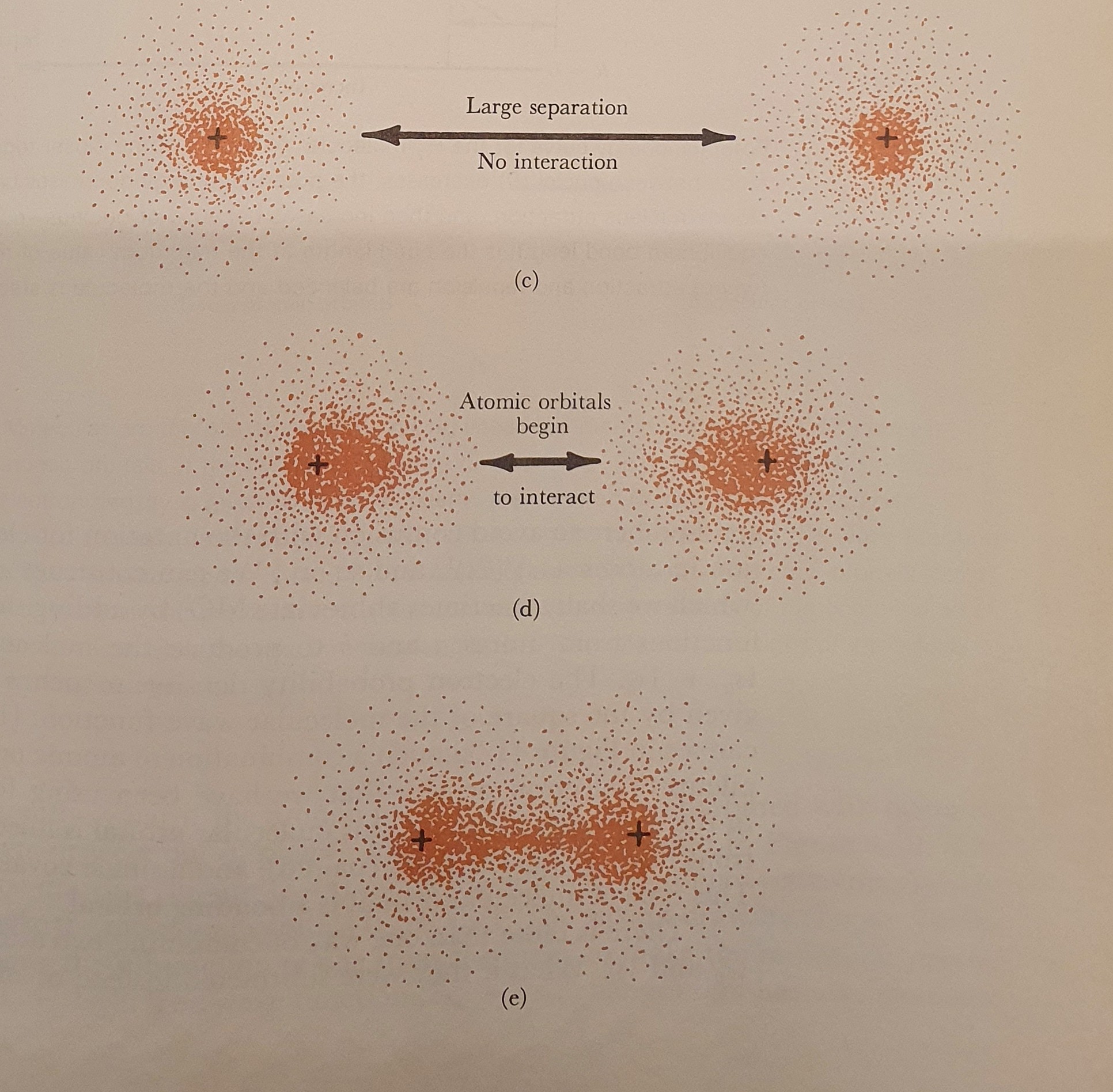If two hydrogen atoms are far apart, they have no effect on one another. But as they are bought closer together, they begin to excerpt an effect. The two nuclei, having the same positive charge, repel one another, and the two electron clouds also repel one another. However, most important of all is the attraction between the nucleus of one atom and the electron cloud of the other atom. As the atoms approach, the electron clouds are pulled toward the region between the nuclei (d). - Chemical Principles, Dickerson, Fourth Edition
First of all, how is it that the electron clouds do not repel each other (as they approach and do not yet have a binding molecular orbital)? Shouldn't (d) look more like this if the first attractive force is from London dispersion force (is it?):
Is the attraction between the nucleus and the cloud only so much stronger because the nucleus is stationary and therefore the electrons repel each other much less than the nucleus attracts them due to the constant change in their residence probability?
In principle, two Xe atoms, for example, should first attract each other in this way, shouldn't they? The only difference is that they do not form a bond. I know that this behaviour is described by the Lennard Jones potential but I would just like an explanation for all this.


